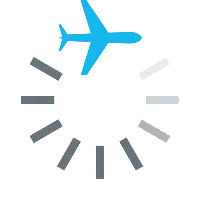When flying with a Canadian airline, it is reasonable and logical to receive a passenger briefing from the flight attendants. As a pilot of a small airplane, it may not seem so obvious when you have to perform your own passenger briefing for those flying with you. In addition to this being a legal requirement according to Canadian Aviation Regulation 602.89, it is also an item on the Private Pilot Flight Test. Often times, student pilots do not have an opportunity to provide a safety briefing to their flight instructor during their flight training. This article will explore how general aviation pilots should consider doing their passenger briefings when flying in light aircraft.
Regulations
As previously mentioned, CAR 602.89 dictates what items must be included in a passenger briefing. Here is that regulation:
-
- 602.89(1) The pilot-in-command of an aircraft shall ensure that all of the passengers on board the aircraft are briefed before take-off with respect to the following, where applicable:
-
- (a) the location and means of operation of emergency and normal exits;
-
- (b) the location and means of operation of safety belts, shoulder harnesses and restraint devices;
-
- (c) the positioning of seats and the securing of seat backs and chair tables;
-
- (d) the stowage of carry-on baggage;
-
- (e) where the aircraft is unpressurized and it is possible that the flight will require the use of oxygen by the passengers, the location and means of operation of oxygen equipment; and
-
- (f) any prohibition against smoking.
-
- 602.89(1) The pilot-in-command of an aircraft shall ensure that all of the passengers on board the aircraft are briefed before take-off with respect to the following, where applicable:
-
- (2) The pilot-in-command of an aircraft shall ensure that all of the passengers on board the aircraft are briefed
-
- (a) in the case of an over-water flight where the carriage of life preservers, individual flotation devices or personal flotation devices is required pursuant to section 602.62, before commencement of the over-water portion of the flight, with respect to the location and use of those items; and
-
- (2) The pilot-in-command of an aircraft shall ensure that all of the passengers on board the aircraft are briefed
-
- (3) The pilot-in-command of an aircraft shall, before take-off, ensure that all of the passengers on board the aircraft are provided with information respecting the location and use of
-
- (a) first aid kits and survival equipment;
-
- (c) any life raft that is required to be carried on board pursuant to section 602.63.
-
- (3) The pilot-in-command of an aircraft shall, before take-off, ensure that all of the passengers on board the aircraft are provided with information respecting the location and use of
Start Early
The safety briefing starts early, like in the club house, terminal, or flight school area. As a pilot meets their passengers, they should inquire about the passengers experience in aircraft, large or small, to build a mental picture of what they might expect from their passengers. Often times the pilot knows the passengers, but it is a good idea to put the passengers at ease and engage in comfortable small talk.
The Walk Around
It is not necessary for passengers to be with pilots while the pilots complete their walk around on the aircraft. In an ideal scenario, you are meeting with your passengers after you have finished this. If you have not done this, it might be wise to ask your passengers to remain in the club house or terminal building while you get yourself situated and set up in the cockpit of the aircraft.
This might also be a wise time to provide the passengers with a briefing card to familiarize themselves with some of the safety features of your aircraft, if such a card exists. While they read the safety features card, you go do your walk around.

Start the Briefing
Continue the briefing as you approach the airplane. Do not start the safety briefing once the passenger, or flight test examiner, is already inside the airplane. Overall, we want to emphasize comfort items first and then move on to any safety items.
Approach the aircraft and point out the doors of the aircraft, discussing how to open the door, close it, and potentially lock it from the inside. Demonstrate how to adjust the seat, where to hold onto the dash (if applicable) and the use of the seatbelt/shoulder harness. Passengers have likely never put on an aviation headset before, so you might want to discuss how it goes on your head and how to take it off when getting out of the airplane.
If the aircraft is equipped with ventilation, show the passengers how they can adjust the vents themselves. But, do not ask them to operate anything on the dash as they may grab the wrong handle or knob. Overall, initially think of comfort items when doing your passenger briefing.
At the Airplane

Continue the briefing as you approach the airplane. Do not start the safety briefing once the passenger, or flight test examiner, is already inside the airplane. Overall, we want to emphasize comfort items first and then move on to any safety items.
Approach the aircraft and point out the doors of the aircraft, discussing how to open the door, close it, and potentially lock it from the inside. Demonstrate how to adjust the seat, where to hold onto the dash (if applicable) and the use of the seatbelt/shoulder harness. Passengers have likely never put on an aviation headset before, so you might want to discuss how it goes on your head and how to take it off when getting out of the airplane.
If the aircraft is equipped with ventilation, show the passengers how they can adjust the vents themselves. But, do not ask them to operate anything on the dash as they may grab the wrong handle or knob. Overall, initially think of comfort items when doing your passenger briefing.
Safety Items

It is the law to discuss certain safety items when flying in small aircraft. As the regulations are written, you need to talk about smoking, emergency exits, first aid kits, the ELT, any overwater safety items, and survival equipment. While discussing this, try and maintain a level or professionalism which instills confidence in you and in the airplane. The last thing you want is the passenger freaking out and turning on an ELT for no reason. That being said, they don’t need a Bachelor’s degree in ELT sciences. Find a balance which discusses the items without giving the passengers an opportunity to doubt the safety of the flight. Here are some general tips:
-
- You’ve likely already discussed emergency exits by this point as you approached the aircraft.
-
- You may choose to add humour to your briefing by stating points with silly scenarios like: In the event of a paper cut, the first aid kit is here.
-
- Smoking may include vaping, it is worth mentioning this if necessary.
- Prior to discussing the “scary” safety items, say reassuring statements like “In the unlikely event of an off-airport landing” or “unscheduled water landing.”
-

Wrap up the safety briefing by discussing when passengers can talk in the cockpit. If the cockpit intercom is always hot, meaning the passengers can talk and everyone can hear them all the time, it might be necessary to point out when you need them to be quiet. Passengers might here all radio communications and may not know when to pipe down for the pilot to hear. We personally tell our passengers that if we need them to be quiet in short notice, we’ll raise our hand or finger. We mention that this is absolutely not personal but is an operational necessity. Usually, passengers are not offended by this as they understand the safety aspect of communications.
Wrap Up the Passenger Briefing
Once everything is completed, help your passengers get into the airplane. Help them stow their belongings, put on their seatbelts, and help them close the door. Once this is all done, it is time for you to get in and do the most exciting part of all, go flying!

Speak Like a Pilot, Not a Parrot: Threshold Concepts in Aviation
Speak Like a Pilot, Not a Parrot: Threshold Concepts in Aviation In aviation, threshold concepts are fundamental ideas that, once understood, transform a student’s perspective...

Owen Sound Flight Services
Owen Sound Flight Services Owen Sound Flight Services is a Transport Canada registered Flight Training Unit, as well as an accredited Ontario Career College. They...

Air Canada Pilot Salary
2024 Air Canada Pilot Strike Update We have had numerous requests for interviews ahead of the looming Air Canada pilot strike. Please be patient as...

How to Brief Your Passengers
When flying with a Canadian airline, it is reasonable and logical to receive a passenger briefing from the flight attendants. As a pilot of a...

Aviation Resume Writing
Freshly minted commercial pilots in Canada often wonder what the next steps are. After all, they are now eligible to start earning money as a...

Depression and Medications for Pilots
We get a lot of questions about depression, mental health issues, anxiety, SSRIs, and antidepressant medications from potential students who want to pursue aviation as...
Discover more from Canadian Flight Trainers
Subscribe to get the latest posts sent to your email.


